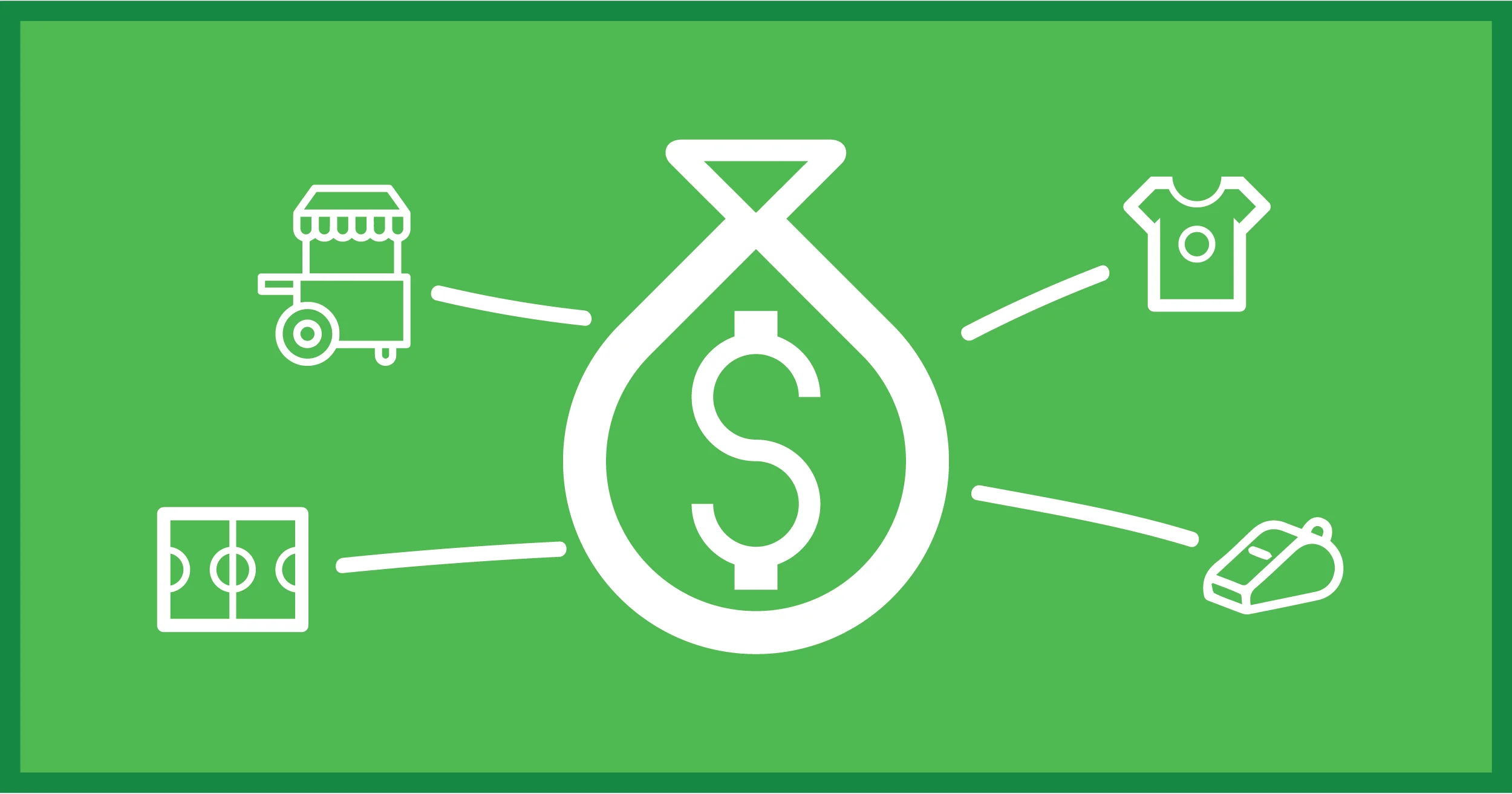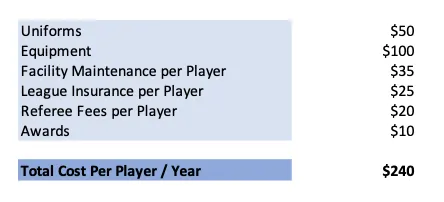
Table of Contents
One of the most challenging aspects of running a sports organization is managing the budget. There are so many fees that can add up throughout the year including uniforms, equipment, facility rentals, league registration, and more. Collecting registration payments, signing up sponsors, and accepting donations doesn't always cover all of your organization's expenses throughout the year.
Setting up a solid financial plan can help you have a stress free season. Read on for our guide to creating a budget at your youth sports organization!

Understand Your Organization's Financial History
The first thing you should do is review the financial performance from previous years. You should do this after your season ends and before you begin registration for the following season. If your organization doesn't have a typical "offseason" then you can review results at the beginning of each year.
Has your organization used any accounting or budgeting software in the past? If so, you should be able to get financial reports from your board. Or, if your organization has filed 501c3 or grant application paperwork they probably have put together annual financial reports each year.
If you don't have access to a budget from previous years, you should still be able to get some details from your bank with information on deposits and withdrawals. This should get you a high level overview of the amount of money collected from registration, concessions, etc. and how much money was spent on facilities, uniform vendors, and more.
Collecting all of your payments online including registration fees, sponsorship payments, and donations can help with tracking before, during, and after your season. Using online payments helps create reports that can be accessed any time and avoids lost paperwork or disorganized deposits.
Collecting all of your payments online can with reporting and budgeting.
Identify Where You're Wasting Money
The second step in getting your organization's finances under control is to stop wasting money. Don't do things just because your organization has "always done it that way".
If you're printing paperwork to send home with kids from school do you still need to do that? Or can you promote your organization more effectively on social media?
Are you getting the best deals for uniforms and equipment? Or is it worth researching new vendors?
Are you making any recurring payments each year for things you're no longer using - like old website hosting, etc.?
Talk with your board about areas you can cut back on unnecessary expenses and don't be afraid to make budget cuts where necessary!

Reviewing expenses from previous years can help you identify areas you've been burning cash.
Calculate the True Costs to Fund a Player
Next you should try to figure out the true costs for a player to participate in your organization. Understanding the cost to fund a player is critical to creating a youth sports business plan.
All you need to do is calculate the total expenses at your organization throughout the year and divide by the number of athletes in the organization. Don't forget to include everything your organization spends money on throughout the year when you calculate the player cost, even costs that aren't directly associated with the players - like facility maintenance and referee fees.
For example, if your organization has 100 players per year, and your total expenses are $10,000, your cost per player is $100.
IMPORTANT NOTE: You'll probably charge much less in registration fees per player than their true cost. You can offset this through fundraising and donations (see more below...)

Figuring out the true cost to fund a player will help determine how much revenue your organization will need for your season.
Create Your Budget Template
After you've gained an understanding of your expenses from previous years, eliminated wasteful spending, and calculated the total cost to fund a player you should begin to build a budget template that you can use in future years. You can even plug in previous year's data to the template so you can easily compare progress.
The budget template doesn't need to be complicated. It can be a simple spreadsheet and it should a lot like a business income statement. Follow these steps below to get started...
Total Up Your Organization's Revenue
Your template will start with Revenues - including a total of all of the incoming money that your organization receives throughout the year. Some common examples include:
- Player Registration Fees
- Concessions
- Apparel Sales
Calculate Fixed Costs
Next you'll add fixed costs. These costs are "fixed" because they won't change regardless of the amount of players that register.
Some examples of fixed costs are:
- Facility Rentals
- Website and Registration Software
- League Insurance
- Charter Registration Fees
Calculate Variable Costs
Next add your variable costs. The more players you have, the higher your variable costs will be.
Some examples of variable costs for sports organizations are:
- Uniforms
- Concessions
- Background Checks for Coaches
- Referee or Umpire Fees
Download Our Youth Sports Budget Template
Once you've figured out all of your revenue and cost line items you can begin to build your budget template.
You can use Google Sheets to create a simple list of your revenue and expenses. Use columns and rows to easily categorize revenues and expenses. You can also include previous years in the document so you can compare each time period side by side.
PRO TIP - You should set up your spreadsheet with formulas to calculate costs automatically. You can estimate your total costs based on the amount of players that register, view the impact of increasing or decreasing registration fees, and more.
Don't want to create your own from scratch? You can make a copy of our template here > Youth Sports Budget Template
Focus on Fundraising to Break Even
When you subtract your expenses from revenue are you getting a negative number? Don't panic - many youth sports organizations are "in the red" in some seasons. Every youth sports organization should fundraise throughout the year to help offset costs.
Before your next season you should develop a fundraising strategy and try to squash fundraising records from previous years! Someone on your board should be strictly focused on fundraising and building relationships in your community.
Need new fundraising ideas? Check out our guide here > The Top Youth Sports Fundraising Ideas to Hit Your Goals
Get creative. If you've calculated the true cost to fund a player you should give parents and community members the option to "Sponsor a Player" before your season starts. The money collected doesn't need to be used to cover the costs of a specific player - instead they can be used to help with the overall operating costs at your organization.
You should also give people the option to donate or sponsor directly on the website. You can even include player sponsorship and donation options in your registration forms.

Making donations and sponsorships easy is the first step to raising more money next year.
Monitor Progress Year Over Year
You should compare your numbers over a 3-5 year period to identify where you can improve. Did fundraising make major improvements this year? Are fewer players registering? It should be quick for your board to identify important areas for improvement within your budget.
Using an accounting tool like Quickbooks, Xero, or Sage can also help quickly compare progress year over year and identify areas for improvement.
You should also have your Treasurer send a financial update before each board meeting. It can be a really short email with basic information about expenses, registration progress, and any budget shortages that the board should be aware of.
Continue to track progress in your budget template and you'll be able to run your organization stress free knowing you won't drain the bank account.